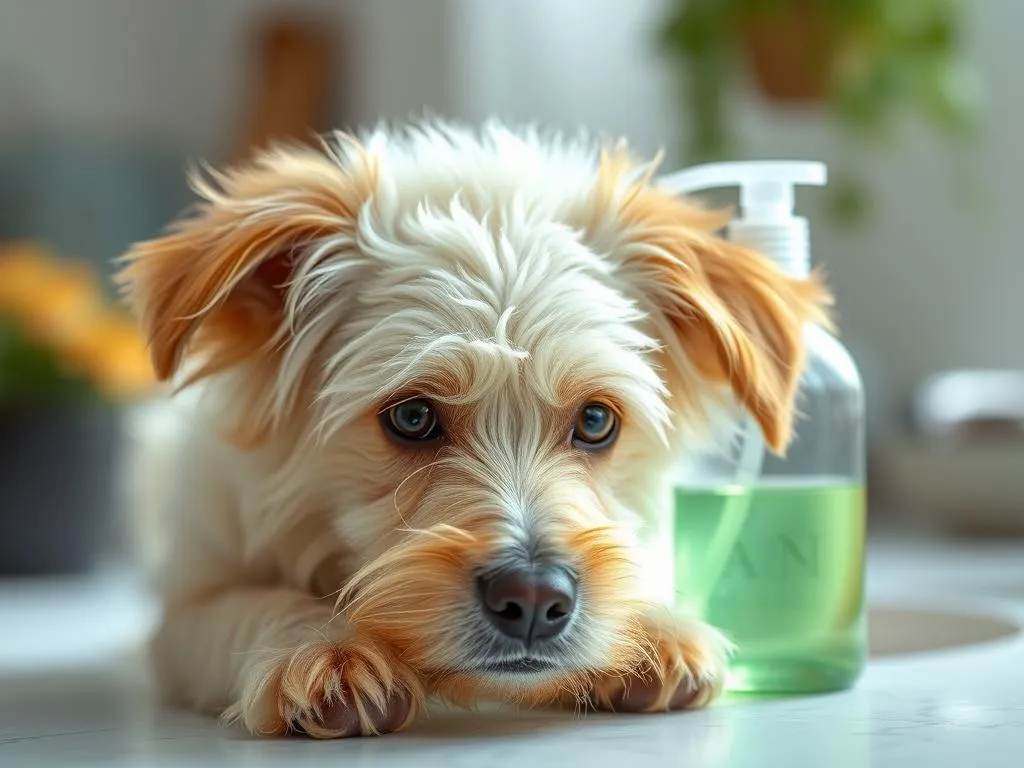
Introduction
Maintaining a dog’s health is a vital responsibility for pet owners. Just like humans, dogs require regular grooming to ensure their overall well-being. Dog health care encompasses various aspects, but grooming plays a significant role in preventing common health issues. Poor grooming can lead to skin irritations, infections, and even behavioral problems due to discomfort.
The purpose of this article is to share valuable insights into homemade dog shampoo recipes. By opting for homemade solutions rather than commercial products, you can provide your dog with a cleaner, healthier bathing experience. This article will guide you through various recipes, highlight the benefits of using homemade shampoos, and offer tips for proper application.
What Readers Will Learn
Throughout this article, readers will discover different types of homemade dog shampoo recipes, the ingredients that are best to use (or avoid), and practical tips for applying these shampoos effectively.
Understanding Dog Skin and Coat Health
Importance of Skin and Coat Health
A dog’s skin and coat are more than just their outer appearance; they play a crucial role in their overall health. Healthy skin acts as a barrier against environmental toxins, allergens, and pathogens. When a dog’s skin is maintained well, it can significantly reduce the risk of allergies and infections, which are common in poorly groomed dogs.
Common Skin Issues in Dogs
Several skin issues can arise from inadequate grooming practices, including:
- Dry Skin: Often caused by environmental factors or dietary deficiencies, dry skin can lead to itching and discomfort.
- Allergies: Dogs can be sensitive to various allergens, including pollen, food ingredients, and chemicals in commercial shampoos.
- Infections: Bacterial and fungal infections can thrive on unhealthy skin, leading to further complications.
- Parasites: Fleas and ticks can irritate the skin and cause significant distress to your dog.
Benefits of Homemade Dog Shampoos
Control Over Ingredients
One of the primary benefits of making homemade dog shampoos is having complete control over the ingredients. Many commercial dog shampoos contain harmful chemicals that can irritate your pet’s skin. Homemade shampoos allow you to customize formulas to meet your dog’s specific needs, using only safe and natural ingredients.
Cost-Effectiveness
Homemade shampoos can also be more affordable than their commercial counterparts. By purchasing ingredients in bulk, you can create multiple batches of shampoo for a fraction of the cost of store-bought products. This not only saves money but also ensures you are using high-quality ingredients.
Environmental Impact
Using homemade dog shampoos can have a positive environmental impact. Commercial products often come in plastic bottles that contribute to waste. By making your own shampoo, you can use reusable containers and reduce plastic waste while choosing natural ingredients that are gentler on the environment.
Essential Ingredients for Homemade Dog Shampoos
Natural Ingredients
When crafting your own homemade dog shampoo recipes, consider incorporating the following natural ingredients:
- Oatmeal: Known for its soothing properties, oatmeal can help alleviate dry skin and itching.
- Coconut Oil: This ingredient provides moisture and can improve the overall health of your dog’s coat.
- Aloe Vera: With its anti-inflammatory properties, aloe vera is excellent for calming irritated skin.
- Essential Oils: Some essential oils, like lavender and chamomile, can be safe and beneficial for dogs. However, it is crucial to ensure that the oils you choose are non-toxic.
Ingredients to Avoid
While there are many beneficial ingredients, there are also several that should be avoided in homemade dog shampoos:
- Harsh Detergents: Ingredients such as SLS (sodium lauryl sulfate) and SLES (sodium laureth sulfate) can be too harsh for a dog’s sensitive skin.
- Artificial Fragrances and Colors: These can cause allergic reactions and irritations in dogs.
- Toxic Essential Oils: Certain oils, like tea tree oil, can be harmful to dogs and should be strictly avoided.
Popular Homemade Dog Shampoo Recipes
Oatmeal and Coconut Oil Shampoo
Ingredients:
– 1 cup oatmeal (finely ground)
– 1 cup coconut oil
– 1 cup water
Instructions:
1. Combine the ground oatmeal and coconut oil in a bowl.
2. Gradually add water until you achieve a smooth paste.
3. Apply the mixture to your dog’s wet coat, massaging it in thoroughly.
4. Rinse well with warm water.
Benefits: This shampoo is particularly beneficial for dogs with dry skin, providing moisture and soothing properties.
Apple Cider Vinegar Shampoo
Ingredients:
– 1 cup apple cider vinegar
– 1 cup water
– 1 tablespoon olive oil (optional)
Instructions:
1. Mix the apple cider vinegar with water in a bowl.
2. If desired, add olive oil for added moisture.
3. Apply the mixture to your dog’s wet coat and massage it in gently.
4. Rinse thoroughly with warm water.
Benefits: Apple cider vinegar is excellent for controlling odors and can help maintain a healthy pH balance in your dog’s skin.
Herbal Infusion Shampoo
Ingredients:
– 1 cup distilled water
– 1 tablespoon dried herbs (such as chamomile or calendula)
– 1 cup unscented Castile soap
Instructions:
1. Boil the distilled water and add the dried herbs, letting them steep for about 15 minutes.
2. Strain the herb mixture and allow it to cool.
3. Mix the herbal infusion with the Castile soap.
4. Apply to your dog’s wet coat and rinse thoroughly.
Benefits: This shampoo harnesses the natural properties of herbs, providing soothing benefits for the skin and coat.
Basic Castile Soap Shampoo
Ingredients:
– 1 cup unscented liquid Castile soap
– 1 cup water
– 1 tablespoon olive oil (optional)
Instructions:
1. Mix the liquid Castile soap with water in a bowl.
2. Optionally, add olive oil for added moisture.
3. Apply the mixture to your dog’s wet coat and massage it in well.
4. Rinse thoroughly with warm water.
Benefits: This gentle shampoo works well for all coat types and is easy to make, providing a basic clean without harsh chemicals.
Tips for Bathing Your Dog
Preparing for Bath Time
Before you begin bathing your dog, gather all necessary supplies, including towels, brushes, and your homemade shampoo. Ensure that the bathing area is comfortable and safe for your dog, as this will help reduce anxiety during bath time.
Bathing Techniques
- Proper Water Temperature: Always use lukewarm water to avoid shocking your dog’s system.
- Techniques for Applying Shampoo: Start from the neck and work your way down, massaging the shampoo into your dog’s coat gently.
- Rinsing Thoroughly: Make sure to rinse your dog thoroughly to avoid any residue that may irritate their skin.
Post-Bath Care
After bathing your dog, use towels to dry them off, or allow them to air-dry in a warm, comfortable area. Additionally, brushing your dog’s coat after a bath can help remove loose fur and dirt while checking for any skin issues.
Frequently Asked Questions (FAQs)
How often should I bathe my dog?
The frequency of baths depends on your dog’s breed, coat type, and lifestyle. Generally, dogs can be bathed every 4-6 weeks, but those that spend more time outdoors may require more frequent baths.
Can I use human shampoo on my dog?
No, human shampoos are not formulated for a dog’s skin pH and can cause irritation. It’s best to use products specifically designed for dogs or homemade alternatives.
What should I do if my dog has an allergic reaction?
If you suspect your dog is having an allergic reaction, consult your veterinarian immediately. Look for symptoms such as excessive itching, redness, or swelling.
Are homemade shampoos suitable for puppies?
Yes, many homemade dog shampoo recipes are safe for puppies, but it’s essential to ensure that all ingredients are gentle and non-toxic. Always consult with your veterinarian before trying new products on your puppy.
Conclusion
In summary, homemade dog shampoos offer numerous benefits, including control over ingredients, cost-effectiveness, and reduced environmental impact. Understanding your dog’s specific needs and the importance of their skin and coat health is essential for their overall well-being.
As you explore these recipes, don’t hesitate to experiment and find the perfect solution for your furry friend. Keeping a diary of what works best for your dog can help you refine your approach to grooming and care.
By taking the time to understand your dog’s unique needs and preferences, you will not only enhance their health but also strengthen the bond you share.









